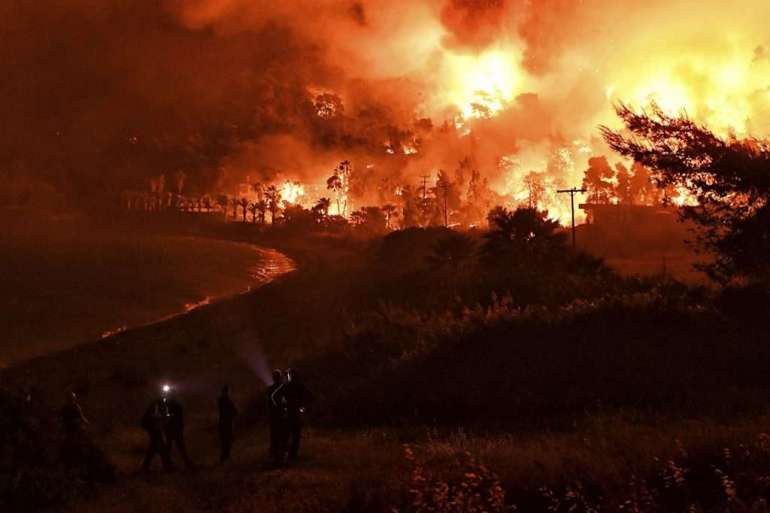‘Get scared’: World’s scientists say disastrous climate change is here

“They’re really the first kind of signs of this new climate condition,” Alexander Ruane, a research physical scientist at the NASA Goddard Institute for Space Studies and a report author, said in an interview. “And I wish I could say that there is a new normal that is a decade away, but of course, it will be continuing to change until some kind of climate policy disrupts the emissions.”
While critics have for decades complained that the climate warnings lacked details about how to prepare for catastrophic change, the new report highlights the increased precision, particularly in scientists’ understanding of the behavior of clouds, that allows them to narrow considerably the range of possible futures, said Piers Forster, a climate physics professor at the University of Leeds. That means gambling on future warming being lower than expected “can be ruled out.”
But the good news, Forster said, is that researchers have “much stronger confidence” that rapidly lowering greenhouse gas emissions would mean “temperature rise can still be limited to 1.5C.”
The scientists are also slightly more optimistic about whether the emissions that have been accumulating in the atmosphere since the Industrial Revolution have already triggered a runaway chain of events that would release even more carbon or methane, such as thawing permafrost or giant fires. That offers hope that countries can still avert such a scenario, although Forster said there were still dynamics that weren’t fully understood. “There are still risks,” he said.
Breaking the bad news
In the run-up to the IPCC report release, the scientists who combed through the research and the politicians who approved the crucial recommendations for policymakers clashed over how best to present the urgent need for action, according to two people familiar with the discussions, who sought anonymity to describe private discussions.
To scientists, it was clear: The world will surpass 1.5 degrees Celsius under the most likely pathways it studied, although the most aggressive climate-fighting scenario eventually slotted the increase at 1.4 degrees — if carbon-storing forests were dramatically increased and technology that can draw carbon from the air was developed. But politicians argued for a more optimistic take: How sharply must emissions be cut before maxing out the global carbon budget, a term that conveys how much headroom for emissions the planet has before crossing 1.5 degrees Celsius.
Political leaders, in essence, wanted to inspire hope that concerted action can avert the looming catastrophes, the people familiar with deliberations said.
Additions to the report not found in previous assessments were included in response to political demands as climate change-driven extreme weather events battered towns, torched crops and upended livelihoods. That included new research in the analyses using cutting-edge scientific methods to compare the intensity of specific weather events with and without human-caused emissions, as well as modeling the predictions on regional climate effects.
The additions reflect both the advancement of the science and the political urgency of the moment, authors said.
“Societally, who cares about a very deep explanation of a process that produces this other phenomenon?” said Claudia Tebaldi, an Earth scientist at the Pacific Northwest National Laboratory and an IPCC author for the regional effects chapter. “[We] look at what the quantities that those people see connected to the impact. What is important for human health in a heat wave? What is the minimum temperature, the maximum temperature? Is it three days, is it five days?”